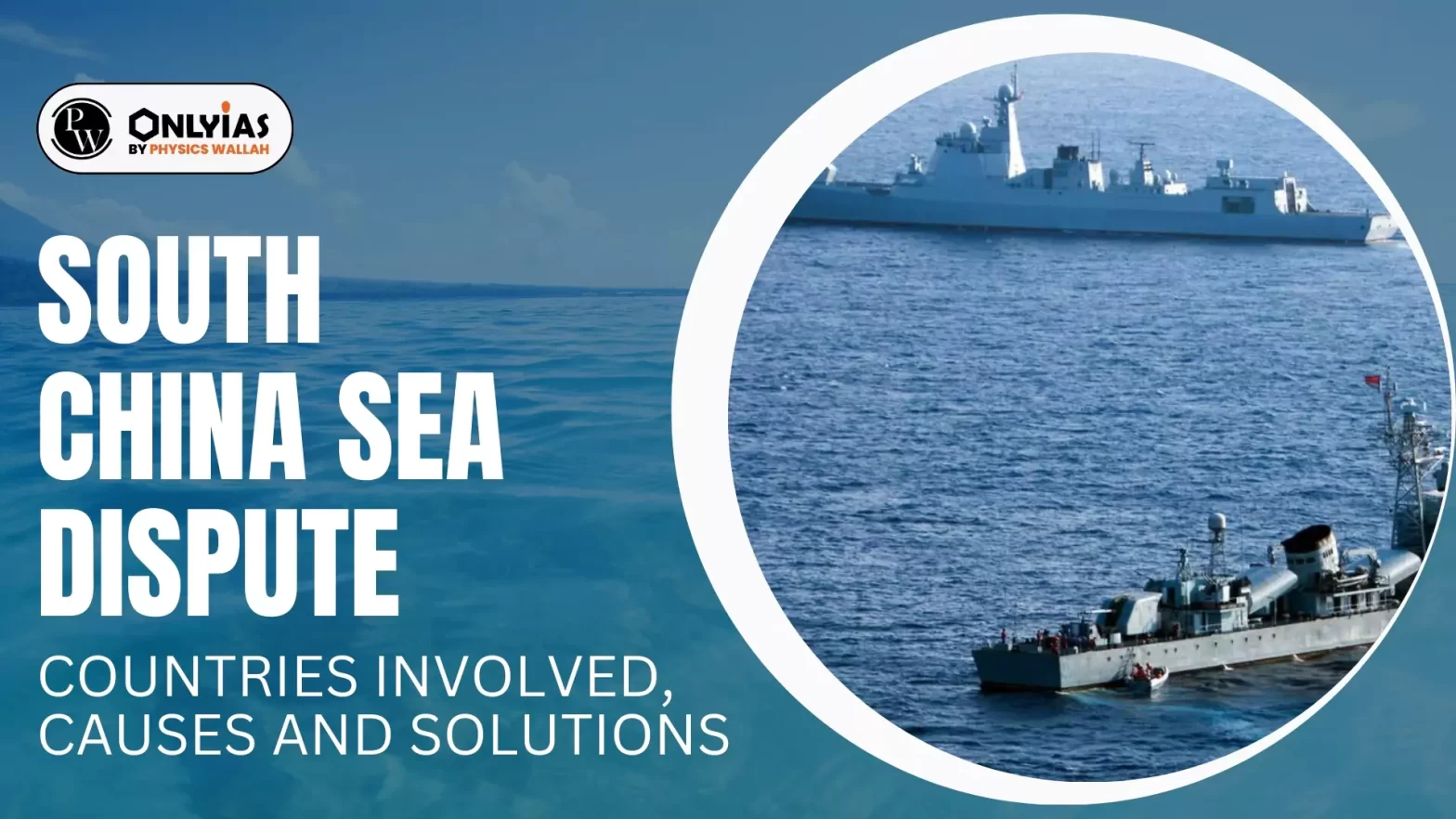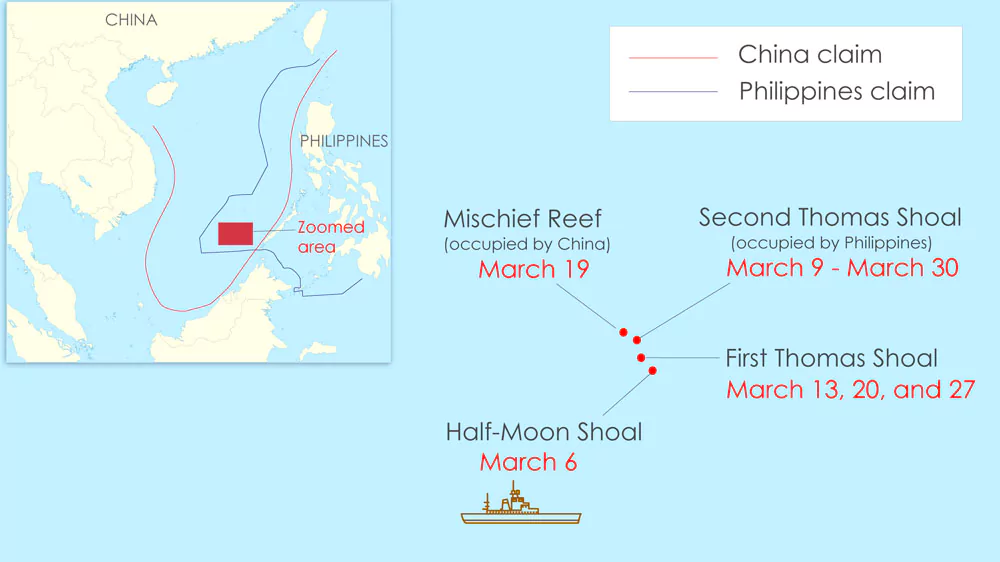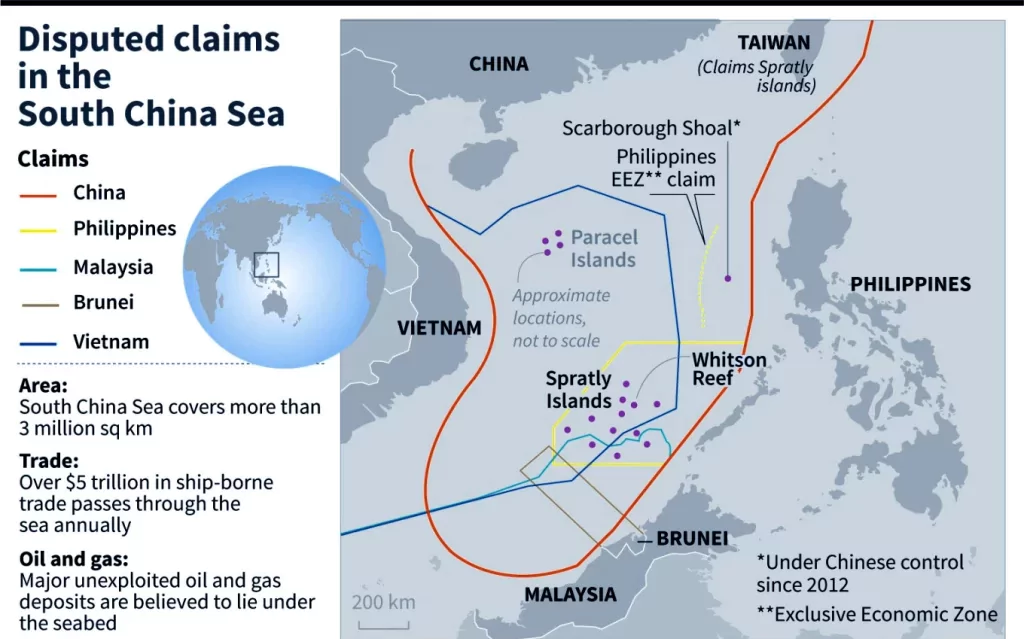![]() 27 Mar 2024
27 Mar 2024

The External Affairs Minister (EAM) of India is on an official visit to the Philippines in the background of heightened tensions between the Philippines and Chinese naval forces.
| Relevancy for Prelims: South China Sea Dispute, UNITED NATIONS CONVENTION ON THE LAW OF THE SEA (UNCLOS), China’s Maritime Expansion, and India’s Response To China’s Naval Expansion.
Relevancy for Mains: South China Sea Dispute: Countries Involved, Causes and Solutions. |
|---|

United Nations Convention on the Law of the Sea (UNCLOS)
|
|---|
Nine Dash Line:
|
|---|
About Scarborough Shoal:
|
|---|
 Vietnam: It claims sovereignty over the Paracel Islands and the Spratly Islands in the SCS. It also contests China’s claims and activities in the disputed waters.
Vietnam: It claims sovereignty over the Paracel Islands and the Spratly Islands in the SCS. It also contests China’s claims and activities in the disputed waters.
Recent Developments in South China Sea Region
|
|---|
India’s Stand on South China Sea Dispute
|
|---|
Measures by India:
|
|---|
| Prelims PYQ (2022):
With reference to the United National Convention on the Law of Sea, consider the following statements: 1. A coastal state has the right to establish the breadth of its territorial sea up to a limit not exceeding 12 nautical miles, measured from baseline determined in accordance with the convention. 2. Ships of all states, whether coastal or land-locked, enjoy the right of innocent passage through the territorial sea. 3. The Exclusive Economic Zone shall not extend beyond 200 nautical miles from the baseline from which the breadth of the territorial sea is measured. Which of the statements given above are correct? (a) 1 and 2 only (b) 2 and 3 only (c) 1 and 3 only (d) 1, 2 and 3 Ans: (d) |
|---|
| Must Read | |
| NCERT Notes For UPSC | UPSC Daily Current Affairs |
| UPSC Blogs | UPSC Daily Editorials |
| Daily Current Affairs Quiz | Daily Main Answer Writing |
| UPSC Mains Previous Year Papers | UPSC Test Series 2024 |

<div class="new-fform">
</div>